While we’ve known for some years that Grey-faced Buzzard and Chinese Sparrowhawk can pass Hong Kong in good numbers on some spring days – evidently after being deflected by easterly winds while migrating from Luzon towards southeast China (Spring Migration of Grey-faced Buzzards and Chinese Sparrowhawks in Hong Kong), sightings of birds of prey heading over in autumn have been more sporadic. But in recent years, helped by a few observers spending time “skywatching” from watchpoints, along with changes in at least Amur Falcon, there have been sightings showing there is some passage, with more to learn.
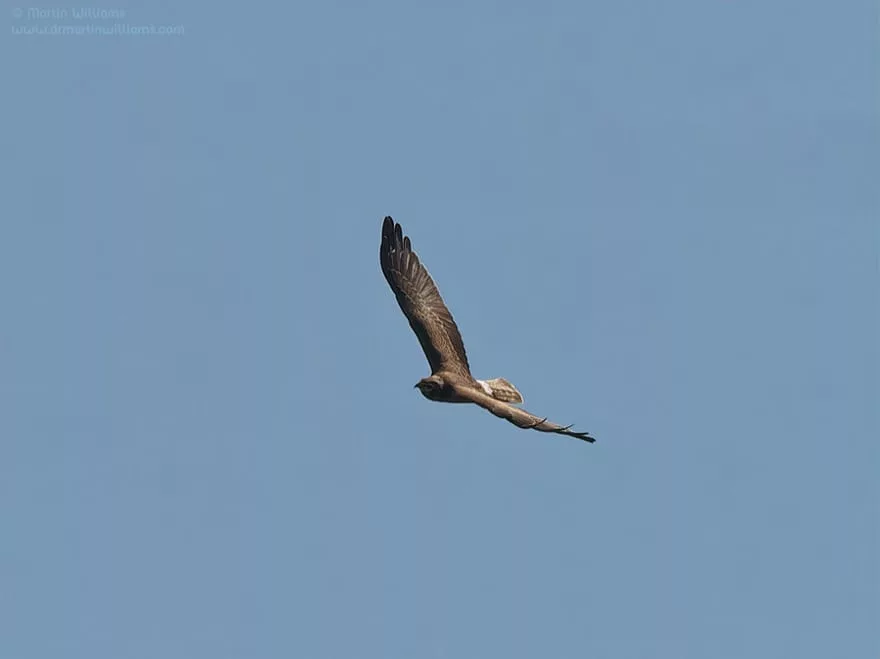
Numbers of individual birds of prey are lower in autumn; it’s challenging to see even ten or more of any one species in a day. But variety is far higher than in spring, with over ten species of raptors (birds of prey) possible on a good day in autumn, especially in October and early November.
Plus there can be swifts, swallows and martins, and some songbirds.
Hong Kong autumn raptors headed for continental flyway
While the Chinese Goshawks and Grey-faced Buzzards seen in spring are mainly from the oceanic flyway east of Hong Kong, it seems birds of prey that pass in autumn are mainly headed for the continental flyway – avoiding lengthy sea crossings, as with the hundreds of thousands of raptors recorded over Khao Dinsor in southern Thailand. This conclusion is partly as the birds are headed roughly east to west; also the species mix is somewhat similar, including Oriental Honey Buzzards.
Places to watch passing raptors in autumn
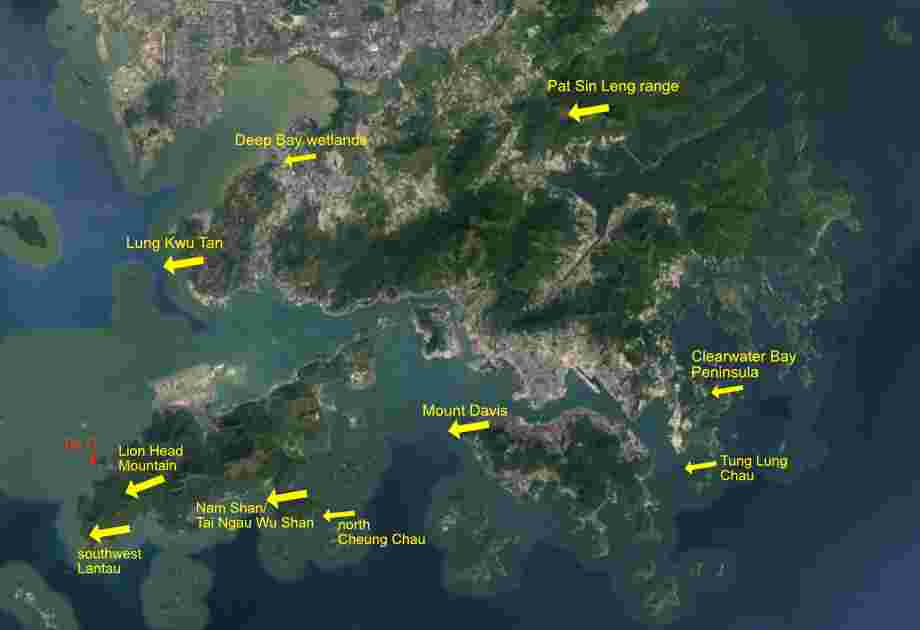
As this map indicates, birds of prey have been recorded passing several places in Hong Kong, in notable numbers, in autumn. To a fair extent, this reflects observer effort, but raptors do pass several places more than others.
Lung Kwu Tan is evidently a good watchpoint for autumn “skywatching”, though I’m told birds tend to pass over quite high. Seeing reports from here helped prompt me to try Fu Shan (Tiger Mountain) at Tai O, but I saw little or no passage, even on a day or two when birds of prey were seen elsewhere, including Nam Shan.
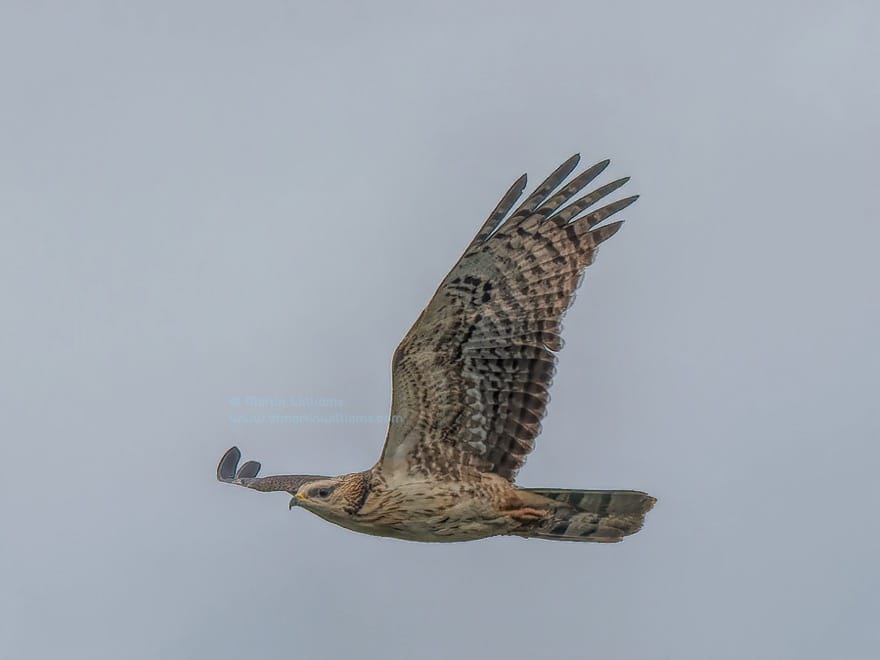
Nam Shan, southeast Lantau, is easily reached and can be good for skywatching [which was first discovered by people camping there, I’m told], but is in a gap between hills so views are restricted.
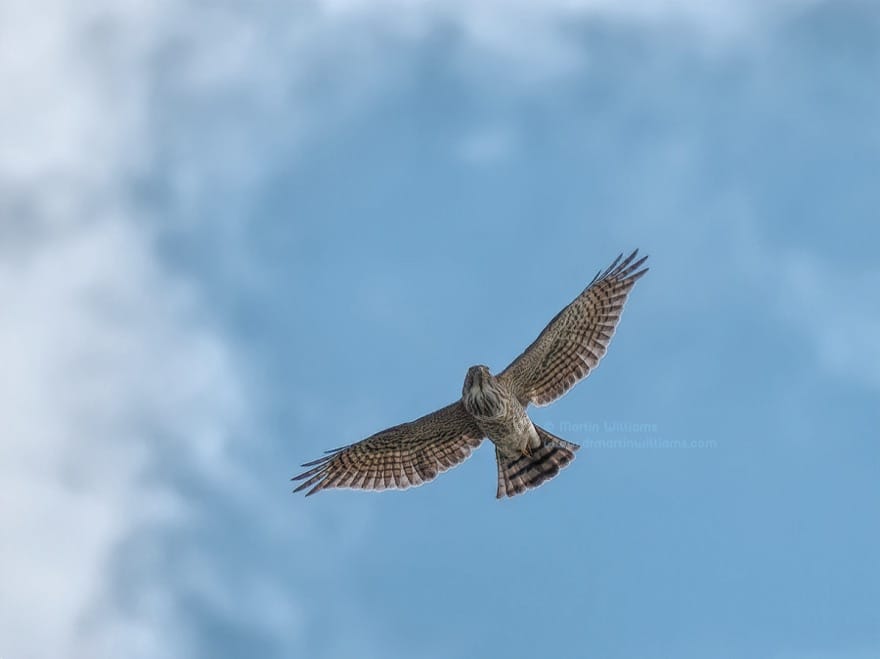
I’ve found it better to head up to Tai Ngau Wu Teng, a hilltop just to the south: this affords expansive views, though trees obscure the view to the east, where most birds are coming from, so raptors might suddenly appear from behind them. Birds can pass close by, at around hilltop height; I’ve seen Oriental Honey Buzzards and Japanese Sparrowhawks arriving at this height, as if they had crossed the western harbour at around 300m.
Lion Head Mountain, Ngong Ping
There’s no shade on Tai Ngau Wu Teng (well, not if you want to see the area around you, rather than stay in the small wood!), so it can be hot on days until late autumn. This was partly the reason I decided to try somewhere higher; with Lion Head Mountain relatively easy to reach as it is near the Ngong Ping bus terminus. Also, birds have been seen passing over southwest Lantau – from Fan Lau, and the catchwater trail west of Shek Pik Reservoir.
I began trying Lion Head in autumn 2022; a few friends also spent sessions there, and we learned it is a good watchpoint (I was frustrated in missing several days because of Covid!)
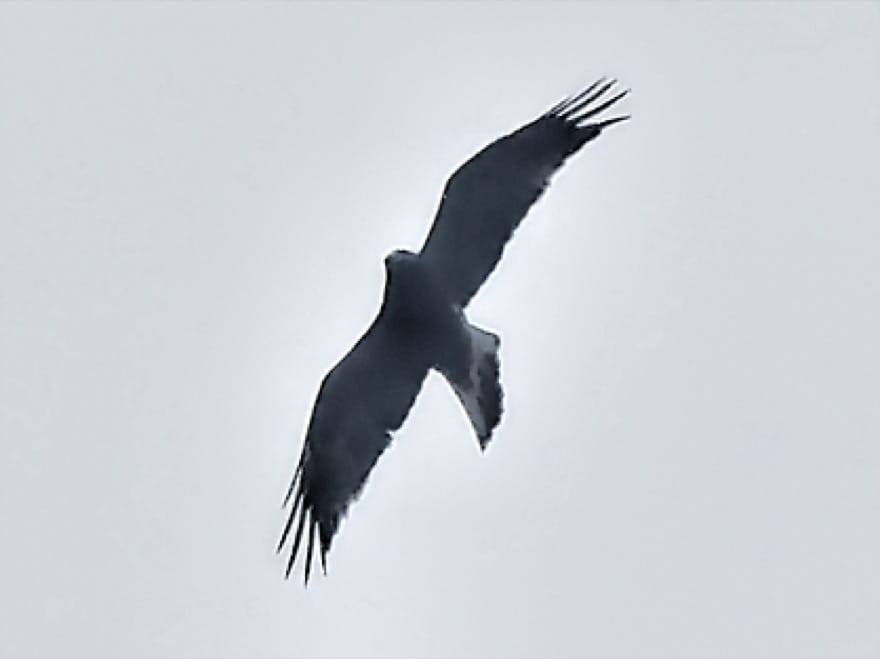
There was a good variety of passing raptors during the autumn, including regular species such as Japanese Sparrowhawks and Oriental Honey Buzzards; also Hong Kong’s second Booted Eagle. During mornings to early afternoons, then tended to pass quite high overhead – almost as if they had gained height to the east, such as over Sunset Peak, unlike at Tai Ngau Wu Teng. But maybe we were just unlucky, and birds can pass lower too, with better photo opportunities. Typically, they appeared from the northeast, and flew west or southwest over the area.
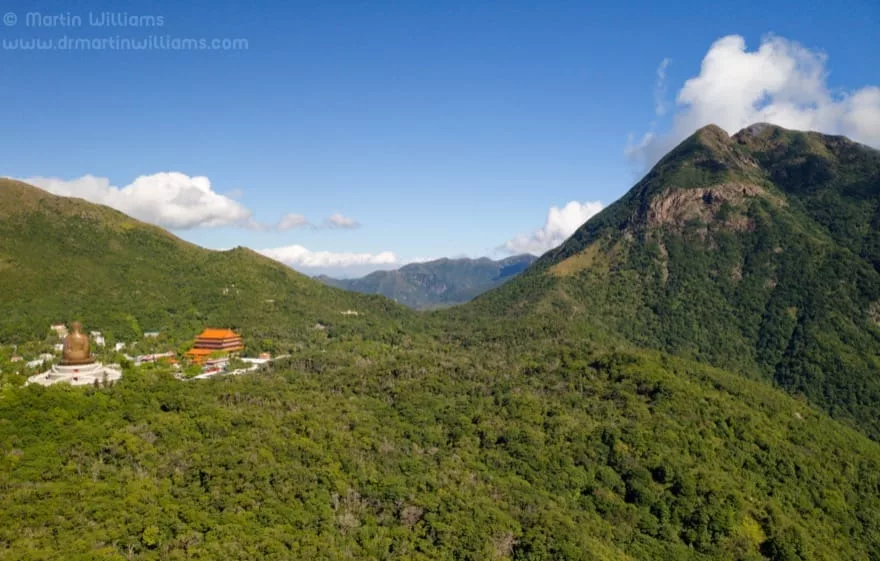
During some afternoons, however, there were passing raptors at or even below hilltop height; maybe considering finding a place to roost for the night.
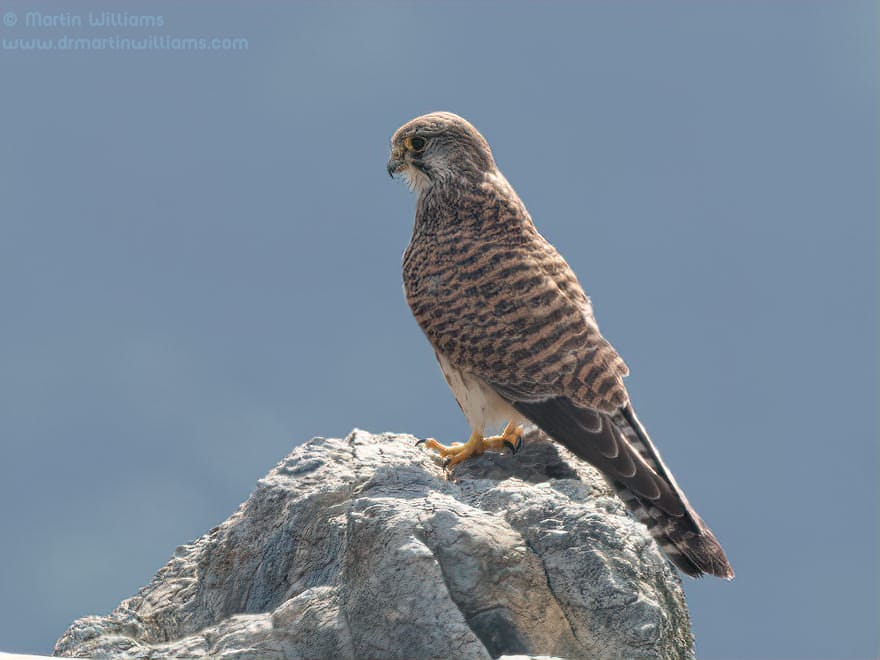
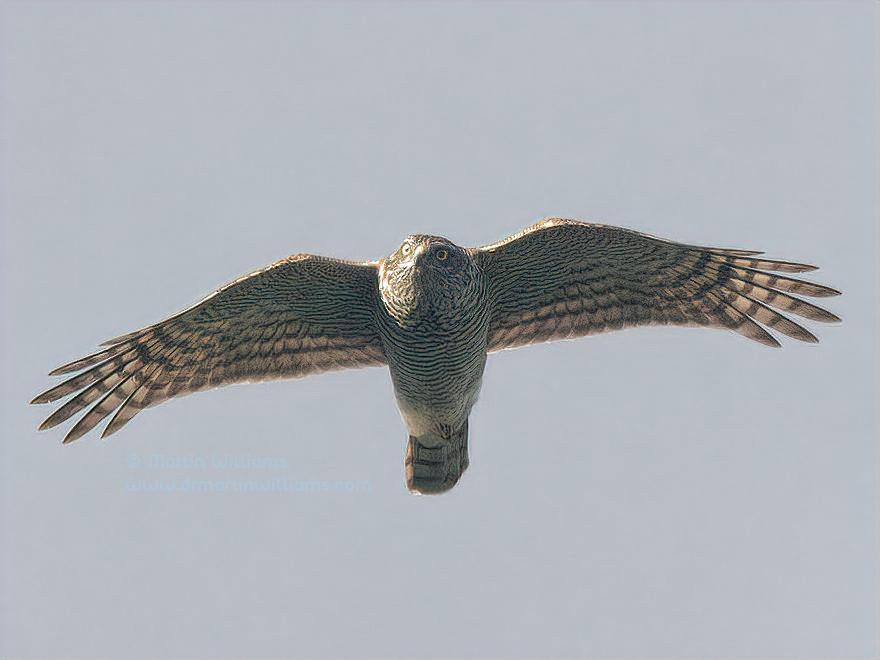
Lion Head Mountain also proved good for “local” birds of prey: year round residents, along with migrants that lingered in the area, maybe for just a day or so, or for a few weeks. These included White-bellied Sea-Eagle, Crested Serpent Eagle, Crested Goshawk, Besra, a Eurasian Sparrowhawk, Common Kestrel, and Eastern Buzzard.
Swifts also passed here; mostly a few Pacific and House swifts, also White-throated Needletails on a couple of days [rare in Hong Kong in autumn; though perhaps occur at Ngong Ping area quite often, favouring hills, but not seen before??]. Barn and Red-rumped swallows also passed; also house martins, maybe all Asian House Martins.
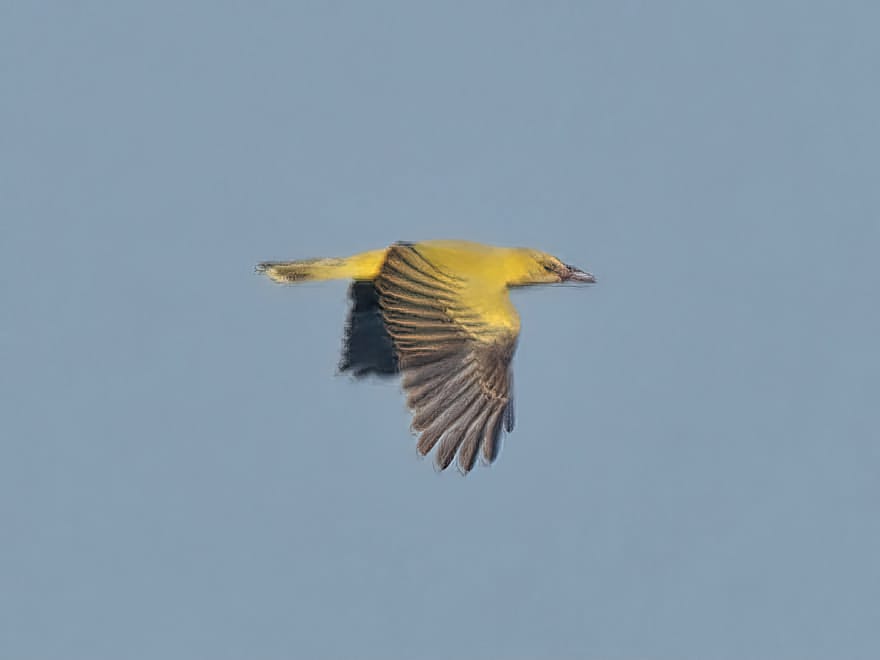
Plus there were some songbirds, like Black Drongos and Black-naped Orioles, also heading roughly northeast to southwest.
So, pretty good for a first autumn of observations from this hilltop; hope there will be more to come, maybe some days with more individual raptors, especially.
For a little more info, and especially more photos, see Birds of Lion Head Mountain and Ngong Ping on Lantau, Hong Kong.
Weather and autumn raptor numbers
Based on various places with way more substantial autumn raptor passage – like Beidaihe east of Beijing, numbers of passing birds should correlate with weather; could expect highest numbers when there are northerly or north-easterly winds.
As yet, though, it’s not so easy to discern a relationship between numbers seen passing over Hong Kong and the prevailing weather. Though I have found that there may be less birds – of any kind – flying over Lion Head Mountain area during fresh winds; if keen to check whether there is passage on these days, it may be best to try a lower vantage where any birds that do pass won’t be buffeted around so much.
It does seem, though, that higher numbers of autumn raptors in Hong Kong may follow a few days after a surge of the northeast monsoon. Perhaps birds are “pushed” further south than their usual routes, then reorient towards the west/southwest along the south China coast. More data needed…
Autumn approaches to Lantau
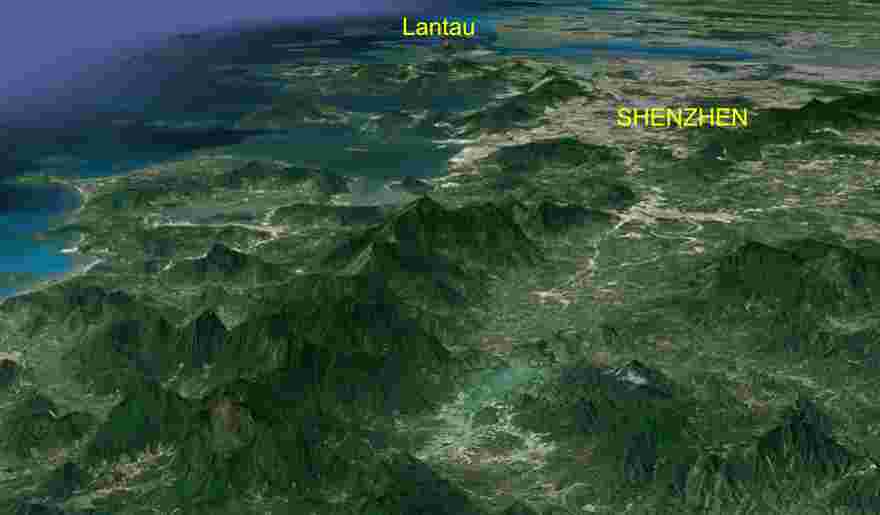
So it seems Lantau is relatively good for seeing raptors and other passing migrants, while “skywatching” in Hong Kong. But why?
Perhaps there’s a clue in the above image, from Google Earth (with terrain exaggerated).
It’s easy to imagine raptors roughly following the hills parallel with the coast, using them a bit like “stepping stones”, gliding and flapping between thermals of rising air over the hills (also air rising as wind blows against hillsides). Nearing the Pearl River mouth, there are more flat lands; the last main hills before crossing the stretch of water are on Lantau.
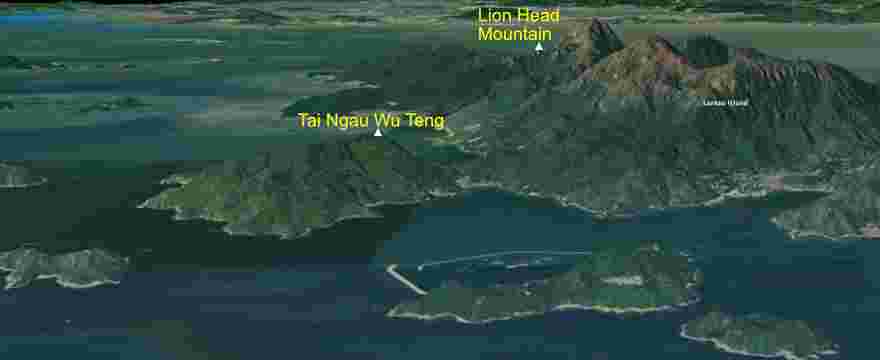
Above, an image indicating a “bird’s-eye view” for a raptor approaching southeast Lantau, such as after passing over north HK Island, where Mount Davis can be productive for visible migration. Tai Ngau Wu Teng is an obvious landmark, which presumably explains why some autumn raptors evidently head for it. (And at bottom left, there’s north Cheung Chau – where passing raptors can be seen, though evidently fewer than over Lantau.)

While here is an image indicating the approach to Lantau from the east-northeast.
It seems at least a majority of the birds seen passing over Lion Head Mountain in autumn 2022 may have approached from about this angle; perhaps followed the hills and took a route just north of Sunset Peak and Lantau Peak.

Hi Mr Williams,
This is James Modesto. I enquired about John Chow’s phone number earlier in February to ask him about the scaly-sided merganser. Wish I was able to thank you sooner, but I’m happy to share that with your help, my article was chosen as the cover for my university’s February features issue.
While the article was printed physically, I’m not sure why it was not posted on our online website.
Here’s my post about it: https://www.facebook.com/100001037562506/posts/pfbid02wD48t3a3tZMAaybHVxPwDAK4V4iwp3CDHbyUkQMyf3jTWgqgg6iubGRq7uvYcuJTl/
Thank you again for helping a student out!
Yours sincerely,
James